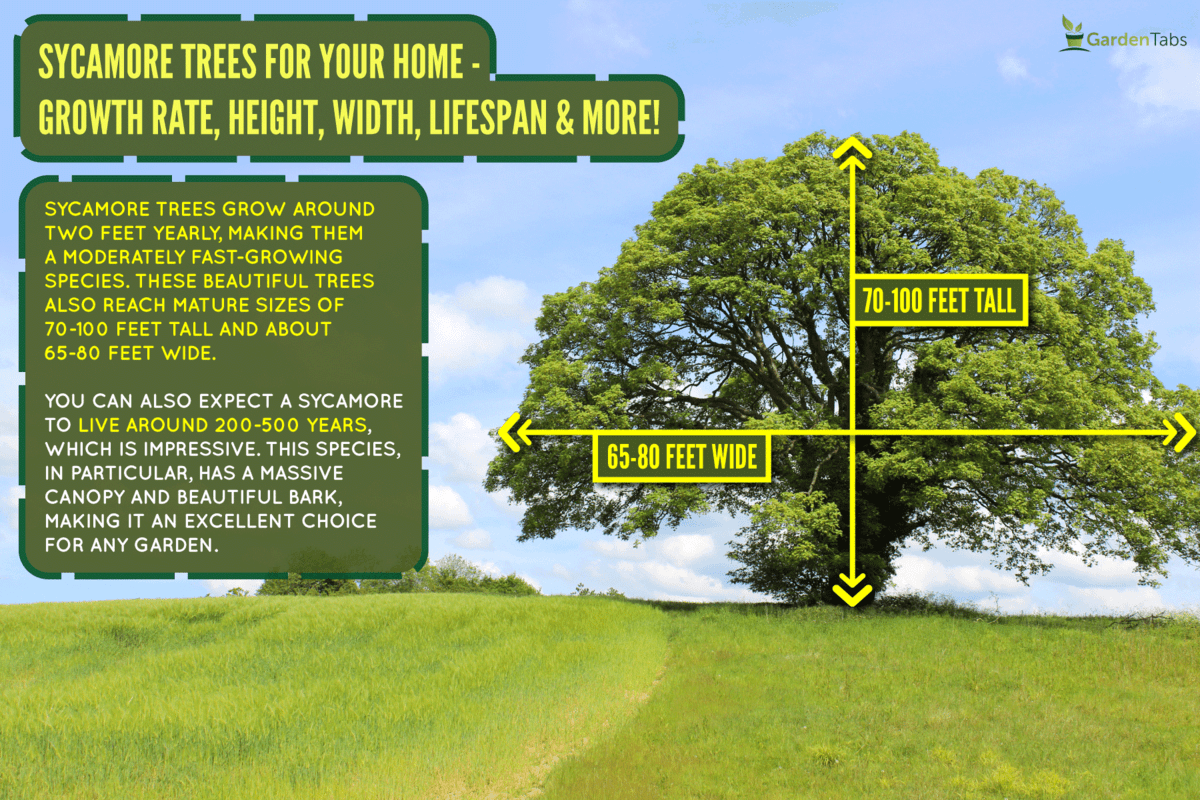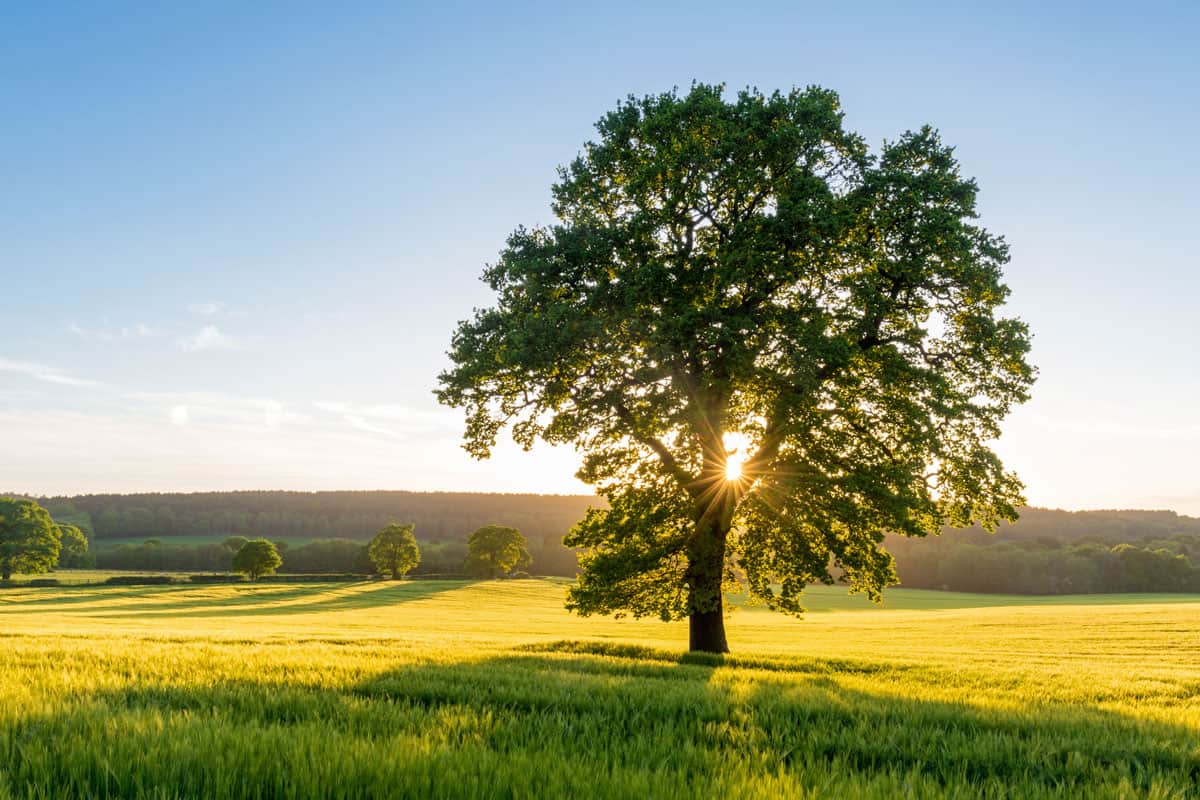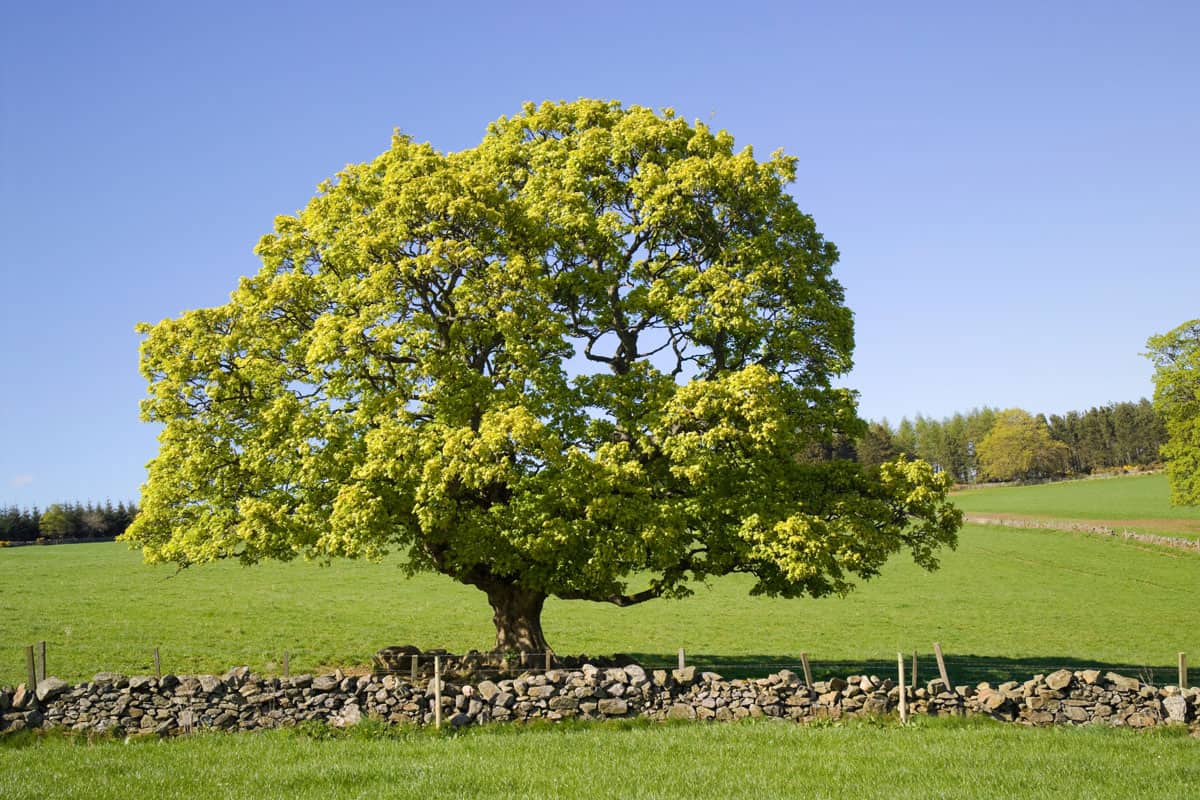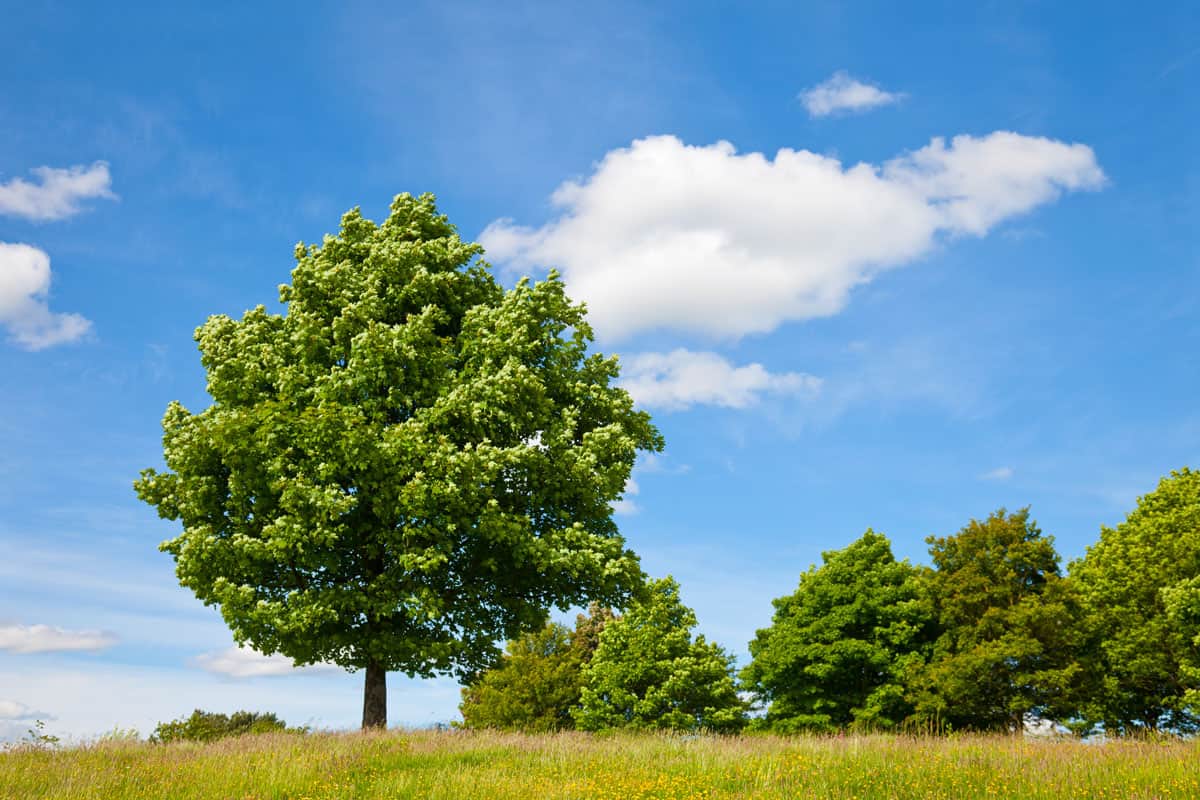Finding the perfect tree to use in your landscape can sometimes be challenging. Are you thinking of growing a sycamore tree in your garden but don't know anything about this species? How fast will a sycamore grow? Do these trees get big, and how long do they live?
We answer all these questions and others in this post. Let's dive right in!
Sycamore trees grow around two feet yearly, making them a moderately fast-growing species. These beautiful trees also reach mature sizes of 70-100 feet tall and about 65-80 feet wide.
You can also expect a sycamore to live around 200-500 years, which is impressive. This species, in particular, has a massive canopy and beautiful bark, making it an excellent choice for any garden.
As we start, we will cover all things sycamore trees and discuss how long they live, how fast they grow, and even how big they get. Whether you have one already in the ground or want to purchase a sycamore, you've come to the right place. Without further ado, let's get right into this article below!

What Makes A Sycamore Tree So Special?
One of the main draws to sycamore trees is their size. As we covered above, these trees can become quite massive, often growing to heights of 100+ feet and widths not far behind.
Sycamore trees are also unique in their appearance, with bark that has a camouflage pattern. You will typically notice sycamore trees have grey-brown outer bark and light grey/whitish wood beneath.
So, besides their impressive size, you can also expect a sycamore to be unique aesthetically. Furthermore, a sycamore tree makes a perfect centerpiece for your landscaping.

Ideally, you will give your tree plenty of open space to grow and sprawl, which can also help keep it alive for centuries to come. Think of sycamore as a generational species that you and your kids/their kids can enjoy and care for.
Another notable detail about sycamores is that they grow very quickly and make great shade trees. You can even hang a swing from one of their branches, so this is almost out of a picture book.
How Fast Will A Sycamore Tree Grow?
You can usually expect a sycamore tree to grow two feet each year. Of course, this will depend greatly on your tree's soil and climate, so everyone will be slightly different.
According to the Clemson Cooperative Extension, sycamore trees are considered moderate to rapid growers, meaning you will see them become large sooner than later.
These trees are often perfect for landscaping, urban or rural, as they don't mind different types of air and ground conditions. Therefore, you can grow a sycamore anywhere there's sun, dirt, and moisture.
It's also worth mentioning that sycamores will grow best in USDA zones 7-11, ranging from south/central Arizona to western New Mexico and northern Mexico.
You can also find sycamores growing near streams and bodies of water in drier states/climates, so they prefer a bit of moisture in their ground.
If you can give your tree ideal conditions, it could exceed two feet of annual growth.
American Sycamore (ASFP) Tree
This sycamore tree will come partially established in a one-gallon planter, requires full sun, and should be planted during the wintertime.
Follow this link to see it on Amazon.
How Big Will A Sycamore Tree Get?
It's normal to see a sycamore tree reach heights of 70 to 100 feet. Sometimes, gardeners even record their wild sycamores reaching 120+ feet, so these trees are undoubtedly large.
When it comes to their width, a sycamore can get around 65 to 80 feet wide at maturity, so you want to make sure yours has plenty of space.
As we said, these trees make excellent sources of shade. If you have a particularly bright garden, it could be worth planting a sycamore or multiple to give the ground below a break from the sun.
With that said, if you want to plant multiple sycamore trees, leave 20 or more feet between them, to prevent their roots and spreads from colliding.
How Long Does It Take For A Sycamore Tree To Reach Full Size?
Now that you know how big a sycamore gets, it's essential to plan out a timeline. Generally, you can expect a sycamore to reach a somewhat mature sizing after ten years.
Figuring your tree grows two feet each year, that puts it at 20ish feet after the first decade. In addition, you will see your sycamore continue to grow and get bigger until it hits between 70 and 100 feet tall.
So, your sycamore could never stop growing as long as you're alive. As we mentioned earlier, planting a sycamore is a great way to leave a legacy for those who come after you, as this species lives for hundreds of years.
However, every tree will grow differently, so yours may not become so massive. You can also prune a sycamore to keep it a specific size, so again, everyone is unique.
The location of a sycamore will also affect its final size, so if you're somewhere urban/more restricted, expect a somewhat smaller tree.
Where Is The Best Place To Grow A Sycamore Tree?

You want to try and grow a sycamore tree somewhere with easy access to water. Although these trees can be found throughout desert states and territories, sycamores need moisture to live.
Since sycamore trees are native to lowlands throughout eastern North America, they can withstand inclement weather such as high winds and hail.
You may also wish to plant your sycamore tree in a rain garden or location where water is nearby, so when in doubt, think about ground moisture.
If you want to grow the American Sycamore tree variety, we recommend staying within USDA zones 4-9, although you could get away with zones 10-11.
On top of that, sycamore trees love the sun. If you want yours to grow quickly, we recommend planting it somewhere that gets at least six hours of direct sunlight daily.
Like any tree species, the closer conditions you can create to one's native land, the better it will grow.
Do Sycamore Trees Live A Long Time?
Yes! One of the many reasons this tree species is so popular is its long lifespan. Remember, it's possible to see a sycamore live upwards of 500 years in ideal conditions, which is incredible to think about.
An interesting fact about sycamores is that they become hollow after 200-300 years. Your tree becomes much lighter in its older age, which wouldn't show if you weren't looking inside of it.
As we said, your sycamore will reach heights of 100+ feet sometimes, so not only will one live long, but it will also become massive within your garden.
What Are The Signs Of A Dying Sycamore Tree?
If your sycamore has been growing since you could remember, there are some warning signs that it's reaching the end of its lifetime.
Generally, a dying sycamore will experience a disease, as well as related symptoms:
- Leaf blight or a loss of foliage during the summertime.
- Twisted or gnarled-looking branches and twigs.
- Formations of twisted branches/twigs (aka "witches brooms").
- Lesions on its leaves that are brown or black colored.
- Sunken cankers on your sycamore's younger twigs and branches.
Luckily, if your tree is still somewhat young, you can typically save it. However, if your tree is very old and looks brittle, it could be time to cut it down.
We recommend consulting a professional landscaper to see what they think.
Are Sycamore Trees Easy To Grow And Maintain?

Yes, you can usually expect growing and caring for a sycamore tree to be easy. Considering this species is somewhat adaptable, you don't always need a specific set of conditions to grow one successfully.
For example, as long as a sycamore gets enough sun exposure, it can grow in almost any soil type. These trees can also withstand waterlogging for short periods, making them perfect for wetter climates.
Additionally, sycamore trees are drought-tolerant once established, so that's impressive for any species. However, you don't want to purposely neglect a sycamore, as this can cause it to become stunted.
It's also better to plant a sycamore in the late winter or early spring before the weather gets too hot. These trees prefer cooler, more moderate climates over scorching temperatures, so keep that in mind.
Regarding ideal soil pH, keep the ground surrounding sycamore acidic or neutral. Sycamores can also thrive in alkaline conditions, but a slight acidity always helps.
Do You Need To Prune Sycamore Trees?
Although these trees are relatively low-maintenance, you need to prune them regularly. In general, it's best to trim a sycamore tree every few months or during their winter dormancy.
Ideally, you will give your sycamore a light trim as the winter arrives, which can help prevent diseases and possible infestations moving forward.
Doing this allows your tree to heal before the bugs wake up in the spring, so when in doubt, try and prune during colder periods.
It's also worth mentioning that sycamores don't usually require dramatic shaping or branch removal. Unless you need to keep one specific size, there's no need to get crazy with the trimming.
To Wrap Things Up

Whether you have a sycamore in your yard or want one, it's always good to understand the basics of this species. From what we found, sycamores live for hundreds of years and become very large over time.
Specifically, one can reach heights of 100+ feet at maturity and a width between 65 and 80 feet! In ideal circumstances, your tree will also have a lifespan ranging from 200 to over 500 years.
These trees also grow pretty fast, averaging two feet each year. So, if you want a quick-growing, large, and long-living tree for your landscape, we recommend a sycamore.
Made it this far? Check out these helpful related articles below!

